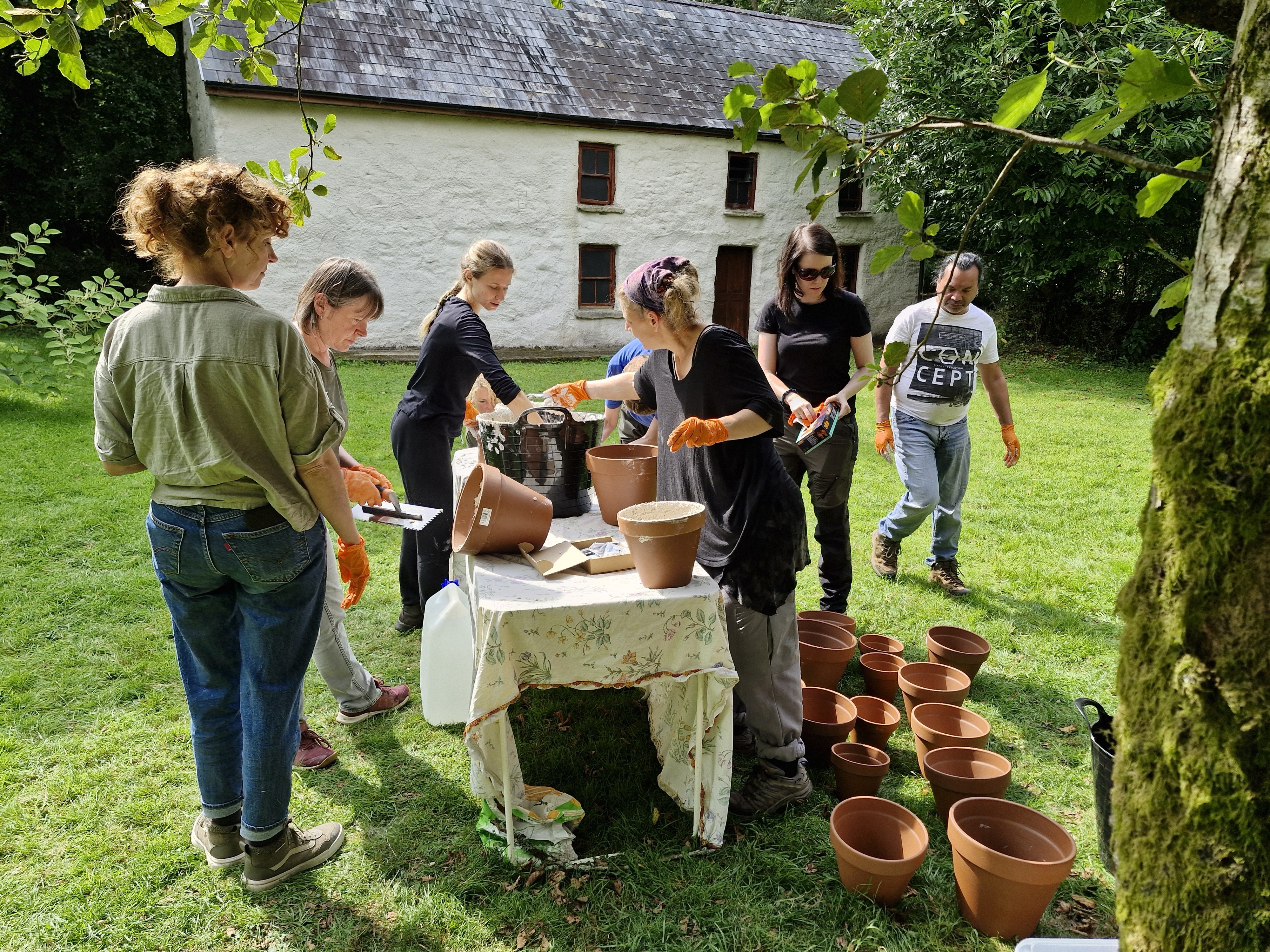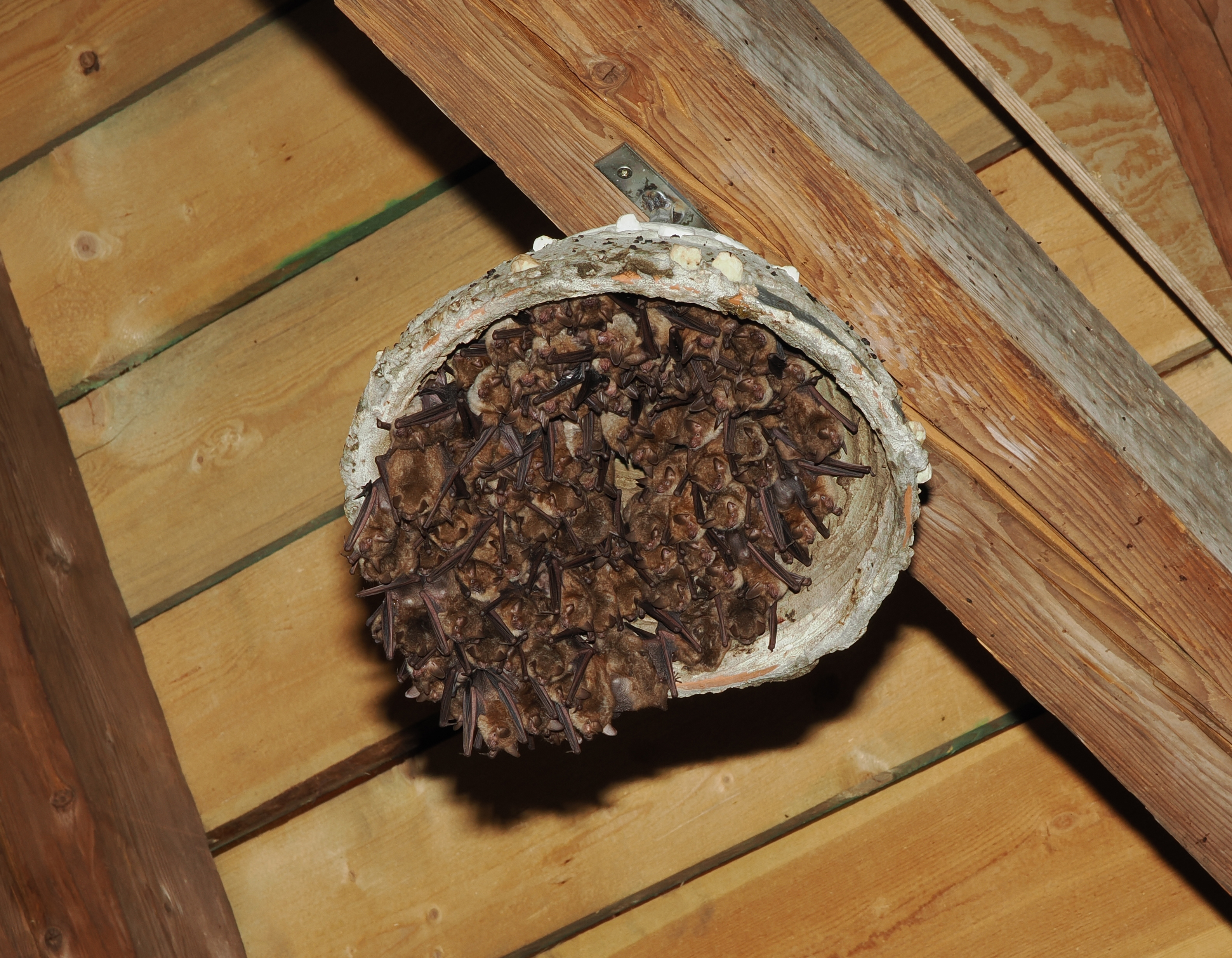Crafting perching substrates for lesser horseshoe bats in Kerry
A messy volunteer event produces new perching pots for lesser horseshoe bats in Kerry, Ireland.
Crafting perching substrates for lesser horseshoe bats in Kerry
Sunny weather, a bucket of lime mortar, teamwork, and a few messy hands—our Kerry volunteer event had it all!
We had a brilliant volunteer day in Kerry, where the focus was on building perching surfaces for lesser horseshoe bats to give them more places to cling and hang inside our bat roosts. Our VWT colleagues, Carys and Jenny, joined us to share their expertise and guide both us and our volunteers through the process.
A hands-on session
In just a few hours, our staff and volunteers produced around 30 perching pots and boards. These will soon be installed in VWT-managed roosts across Kerry, and will provide valuable new perching places for the local bat population.

Why pots and boards?
Modern building materials are often too smooth for bats to grip onto and by using terracotta pots and wood wool boards coated with lime mortar, we can give bats the rough surfaces and crevices they need. Terracotta pots have an added benefit too — they create small pockets of different microclimates within the roost, which allow the bats to choose warmer or cooler spots to conserve energy depending on whether they’re raising young, or adapting to the outside weather.
These bat pots were first developed in Poland during the Life Podkowiec+ project (2013–2018),and were inspired by the sight of Geoffroy’s bats using lampshades to roost in. Since then, they’ve proved successful not only for Geoffroy’s bats but also for lesser and greater horseshoe bats. To complement them, stone tiles were later created for lesser horseshoe bats, which reflects their preference for roosting on stone surfaces.

Photo: Bats using perching pots ©Life Podkowiec+ project (LIFE12NAT/PL/000060 project (2013-2018).
The session was a great success and we rounded things off in the best way possible — with tea, coffee, and biscuits! Huge thanks to Carys and Jenny for leading, and to our volunteers for getting stuck in and a bit messy in the name of conservation.
We’re deeply grateful to our funders, the Heritage Council and the Irish Environmental Network, whose support makes our work possible.
